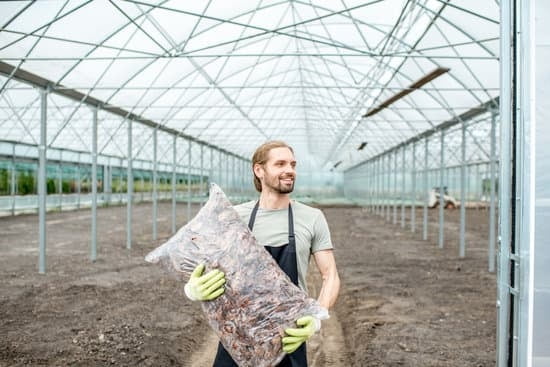When it comes to tending to your garden, choosing the right clothing can make all the difference in ensuring a comfortable and productive experience. From protecting your skin from the sun’s rays to providing ample storage for your gardening tools, the right attire is essential for any gardener. In this article, we will explore various clothing ideas tailored specifically for those with a green thumb.
Gardening can be a physically demanding activity that requires proper attire to keep you cool, protected, and comfortable throughout the day. The type of fabric you choose to wear plays a significant role in achieving these goals. Breathable cotton and moisture-wicking materials are top choices for gardeners, allowing for optimal airflow and sweat absorption during long hours spent outdoors.
In addition to selecting the right fabric, other factors such as sun protection, footwear choices, layering strategies, pockets and tool belts, protective gear like gloves and hats, as well as stylish yet functional options will also be discussed in this article. By incorporating these clothing ideas into your gardening routine, you can ensure both practicality and style while enjoying your time in the garden.
The Right Fabric
When it comes to choosing the right clothing for gardening, the type of fabric plays a crucial role in ensuring comfort and functionality. One of the most popular choices for gardeners is breathable cotton. Cotton allows air to circulate, keeping the body cool and preventing overheating during long hours spent outdoors. Additionally, cotton is a natural fabric that is soft against the skin, reducing the risk of irritation or discomfort while working in the garden.
Another excellent option for gardening apparel is moisture-wicking materials. These fabrics are designed to pull moisture away from the skin, keeping you dry and comfortable even when sweating profusely under the sun. Moisture-wicking clothing is especially beneficial during hot summer days or intense gardening sessions where staying dry can help prevent heat-related illnesses. Look for garments made from synthetic fibers like polyester or nylon with moisture-wicking properties for optimal comfort while tending to your plants.
In addition to cotton and moisture-wicking materials, blends that combine these features can also provide a good balance of breathability and moisture management. Fabrics like polyester-cotton blends offer the best of both worlds, allowing for airflow while effectively wicking away sweat. Remember to choose clothing items made from these fabrics when planning your gardening outfit to ensure a comfortable and productive outdoor experience.
- Breathable cotton fabric allows air circulation
- Moisture-wicking materials keep you dry
- Blends provide a balance of breathability and moisture management
Protection From the Sun
When spending long hours in the garden, it is essential to protect your skin from the harmful effects of the sun’s UV rays. Choosing clothing with UPF (Ultraviolet Protection Factor) can provide an added layer of defense against sunburn and skin damage. UPF-rated clothing is specially designed to block a significant amount of UV radiation, offering better protection than regular garments.
Lightweight and Breathable Fabric
Opt for lightweight and breathable fabrics like cotton or moisture-wicking materials that offer UPF protection. These fabrics not only shield your skin from the sun but also help keep you cool and comfortable while working in the garden. Look for clothing with a tight weave for added protection against UV rays.
Long-Sleeved Shirts and Wide-Brimmed Hats
Choose long-sleeved shirts with UPF protection to cover your arms and avoid sun exposure. Pair them with wide-brimmed hats that shade your face, neck, and ears from direct sunlight. Additionally, consider wearing sunglasses with UV protection to shield your eyes from harmful rays. Keep in mind that even on cloudy days, UV rays can penetrate through clouds, so it’s crucial to protect yourself regardless of the weather.
UV-Protective Accessories
Aside from clothing, invest in UV-protective accessories like umbrellas or parasols to create additional shade while gardening. Sunscreen should also be applied to any exposed skin areas for comprehensive protection against UV radiation. By being mindful of the clothing you wear and taking precautions against sun exposure, you can enjoy your time in the garden safely and comfortably.
Footwear
When it comes to choosing the right footwear for gardening, comfort, durability, and support are essential factors to consider. Here are some suggestions for comfortable and durable footwear that will provide good support while working in the garden:
- Garden Clogs: Garden clogs are a popular choice among gardeners due to their slip-on design and waterproof materials. These clogs offer great versatility, as they can easily be slipped on and off when moving between indoor and outdoor gardening tasks.
- Rubber Boots: Rubber boots are another excellent option for gardeners, especially when dealing with muddy or wet conditions. Look for boots with a reinforced toe cap for added protection from accidental bumps or heavy objects.
- Hiking Shoes: For those who prefer more ankle support and traction, hiking shoes can be a suitable choice for gardening activities. Opt for shoes with a sturdy sole and breathable materials to keep your feet comfortable throughout the day.
Having the right footwear is crucial to ensure that you can move around the garden comfortably without risking injuries or discomfort. Whether you prefer clogs, rubber boots, or hiking shoes, prioritize selecting footwear that fits well and provides adequate support for long hours of gardening.
Remember that proper footwear not only keeps your feet happy but also contributes to your overall comfort and productivity while tending to your plants. By investing in quality garden footwear that offers both comfort and durability, you’ll be better equipped to enjoy your time in the garden without any foot-related issues.
Layering
One of the main benefits of layering is being able to add or remove layers as needed. For early mornings or cooler days, starting with a base layer made of moisture-wicking material can help keep sweat away from the skin and regulate body temperature. On top of this, adding a lightweight long-sleeved shirt provides an extra barrier against the chill. As the day warms up, simply shed some layers to prevent overheating.
Additionally, layering allows for flexibility in different gardening tasks. For example, wearing a vest with plenty of pockets over a base layer can provide easy access to tools and equipment while keeping the arms free for movement. Choosing versatile pieces that can be easily layered not only enhances comfort but also improves functionality in the garden.
| Layering Benefits | Clothing Ideas |
|---|---|
| Adjustable comfort for changing temperatures | Moisture-wicking base layers |
| Flexibility for various gardening tasks | Vests with ample pockets |
Pockets and Tool Belts
As a gardener, having clothing with ample pockets and tool belts can significantly enhance your gardening experience. The convenience of having easy access to essential gardening tools like pruners, trowels, or gloves can save you time and effort while working in the garden.
Clothing with multiple pockets allows you to keep your tools organized and readily available whenever you need them. Tool belts are also a practical addition, providing a hands-free option for carrying small tools as you move around your garden.
When selecting clothing with pockets and tool belts for gardening, consider garments that are made from durable materials that can withstand the wear and tear of outdoor work. Look for reinforced stitching on pockets and secure closures to prevent tools from falling out while you’re busy tending to your plants. Additionally, choose clothing that offers a comfortable fit so that you can move freely without feeling restricted by the weight of your tools or supplies.
Investing in clothing designed specifically for gardeners can make a significant difference in how efficiently you can complete tasks in your garden. Whether it’s a pair of sturdy pants with reinforced knee patches for added protection or a lightweight vest with multiple pockets for storing smaller tools, having the right clothing with ample pockets and tool belts can streamline your gardening routine.
Consider incorporating these practical garments into your gardening wardrobe to elevate your overall experience as you tend to your plants.
| Benefits | Recommendations |
|---|---|
| Convenience of easy access to tools | Select durable materials for longevity |
| Organized storage for essential gardening items | Look for secure closures on pockets |
| Enhanced efficiency in completing gardening tasks | Choose comfortable fits for ease of movement |
Protective Gear
When it comes to gardening, protective gear plays a crucial role in ensuring the safety and comfort of the gardener. One essential piece of protective gear is gloves. Gardening gloves not only shield hands from dirt, thorns, and sharp objects but also provide a better grip on tools. It is recommended to choose gloves made from durable materials like leather or synthetic fabrics for optimal protection.
In addition to gloves, hats are another important accessory for gardeners to consider. A wide-brimmed hat can offer protection from the sun’s harmful rays and prevent overheating during long hours spent working outdoors. Look for hats with UPF (Ultraviolet Protection Factor) ratings to ensure maximum protection against UV radiation. Some hats even come with built-in sweatbands to keep you cool and comfortable while gardening.
Lastly, knee pads are indispensable for gardeners who often find themselves kneeling or crouching down while tending to plants or working on the ground. Knee pads provide cushioning and support for the knees, reducing strain and preventing injuries. Choose knee pads with adjustable straps and padding that offer both comfort and durability. By investing in quality protective gear like gloves, hats, and knee pads, gardeners can enjoy their time in the garden while staying safe and comfortable.
Stylish Yet Functional
When it comes to choosing clothing for gardening, functionality and practicality are key considerations. However, that doesn’t mean you have to sacrifice style while tending to your garden. There are plenty of stylish clothing options available that not only protect you while working in the garden but also make you look good.
Colorful and Fun Prints
Who says gardening clothes have to be dull and boring? Opt for colorful tops or bottoms with fun floral prints or nature-inspired patterns. These outfits will not only brighten up your day but also add a touch of personality to your gardening ensemble.
Chic Garden Hats
A stylish hat is a must-have accessory for any gardener. Choose a wide-brimmed straw hat or a trendy bucket hat to shield your face from the sun while adding a fashionable flair to your outfit. Not only will it protect you from harmful UV rays, but it will also keep you looking chic as you work in the garden.
Cute Garden Clogs
Upgrade your footwear game with cute garden clogs that are both comfortable and stylish. Look for colorful or patterned designs that will add a pop of color to your gardening attire. With good support and durability, these clogs will keep your feet happy and looking fashionable as you plant and prune in the garden.
By incorporating these stylish clothing ideas for a gardener into your wardrobe, you can stay protected and comfortable while still showcasing your personal style. Remember, being fashionable in the garden doesn’t have to be complicated – just choose pieces that reflect your personality and make you feel confident while getting down and dirty with your plants.
Clean-Up and Care
When it comes to gardening, choosing the right clothing is key not just for comfort but also for safety and functionality. From the fabric to the footwear and accessories, every aspect of your gardening attire plays a crucial role in ensuring a pleasant and productive gardening experience. By following these tips on how to properly clean and store your gardening clothing, you can maintain their quality and longevity, allowing you to enjoy your time in the garden to the fullest.
One important aspect of caring for your gardening clothing is proper cleaning. Soil and plant debris can quickly accumulate on your clothes while working in the garden, so it’s essential to wash them regularly. Follow the care instructions on the garment labels to ensure that you are washing them correctly. Stains from sap or mud may require pre-treatment before washing to prevent them from setting in permanently.
Once your gardening clothing is clean, it’s important to store them properly to maintain their quality over time. Avoid storing dirty or damp clothes, as this can lead to mold or mildew growth. Make sure your clothes are completely dry before putting them away.
Consider investing in breathable storage containers or garment bags to protect your clothing from dust and pests. By caring for your gardening attire with these simple tips, you can extend their lifespan and continue enjoying your time outdoors while looking stylish and functional in your clothing ideas for a gardener.
Frequently Asked Questions
What Should Gardeners Wear?
Gardeners should wear comfortable and practical clothing when tending to their gardens. This includes items like a wide-brimmed hat to protect from the sun, gloves to prevent blisters and cuts, sturdy closed-toe shoes for safety, and long-sleeved shirts and pants to protect from scratches and sun exposure.
What Should I Wear When Doing Yard Work?
When doing yard work, it is important to wear appropriate attire that provides both comfort and protection. This might include clothing such as breathable shirts and pants, sturdy closed-toe shoes with good grip, a wide-brimmed hat or sunglasses for sun protection, and work gloves for handling tools or debris.
How Do You Dress in a Garden?
Dressing in a garden involves choosing clothing that is suitable for the specific tasks at hand. It is important to consider factors like weather conditions, potential hazards in the garden, and personal comfort. Opt for breathable fabrics, protective gear like gloves and hats, and comfortable shoes for spending extended periods outdoors.

Welcome to my gardening blog! I am passionate about plants and enjoy sharing my knowledge and experiences with others. In this blog, I will write about everything related to gardening, from tips on how to get started to updates on my own garden projects.





